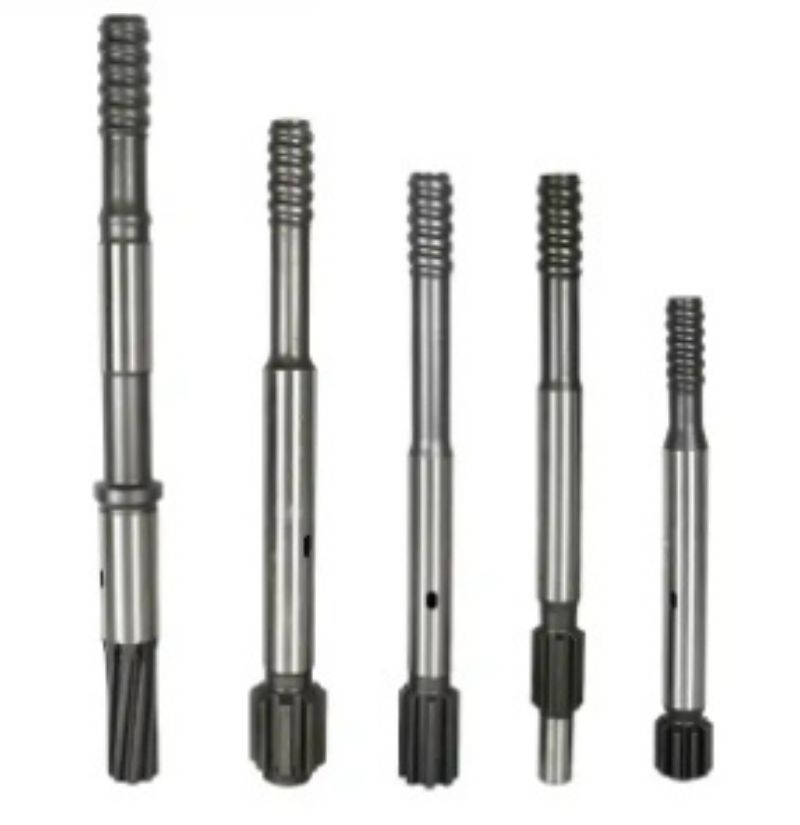Shank adapters typically come in two main thread types: internal and external.
Internal thread: A common internal thread type is R25, which has an M16 internal thread. This internal thread adapter is usually used in rock drilling tools that match the drill bit.
External thread: Common types of external threads are R32, R38 and T38. These threads are typically used to connect the shank adapter to the load-bearing portion of a hydraulic rock drill. These thread types generally comply with international standards to ensure their compatibility and interchangeability. As the name suggests, the female joint has internal threads and can be matched with rock drilling tools with external threads, while the male joint has external threads and can be connected with hydraulic rock drills with corresponding internal threads.
When selecting an adapter, you must ensure that its thread type matches that of the hydraulic rock drill and rock drilling tool to ensure safe and efficient work.
There are some other important aspects to consider when it comes to adapters. Material Selection: Welding adapters are typically made from high-strength alloy steel to ensure durability and load-bearing capacity. These alloy steel materials are resistant to wear, corrosion and fatigue, providing stability in harsh working environments. Length and Size: Adapter length and size should be selected based on specific needs. Longer adapters provide greater connection strength, while shorter adapters provide greater operational flexibility.
Additionally, the size of the adapter should match the size of the tool and machinery to ensure a secure connection. Structural design: The design structure of the solder tail adapter is also very important. One common design is to use shoulder links, which provide additional support and connection strength and reduce strain and the risk of fatigue cracking.
Additionally, the weight and shape of the adapter should be considered during the design process to improve ease of operation and personnel safety. Use and Maintenance: Proper use and maintenance of the toolholder adapter is essential to extend its service life and ensure job safety. Ensuring that the adapter’s threads are clean and properly lubricated will reduce the risk of wear and corrosion. Additionally, proper loading, unloading, and connection procedures should be followed when using adapters.
Post time: Nov-24-2023








